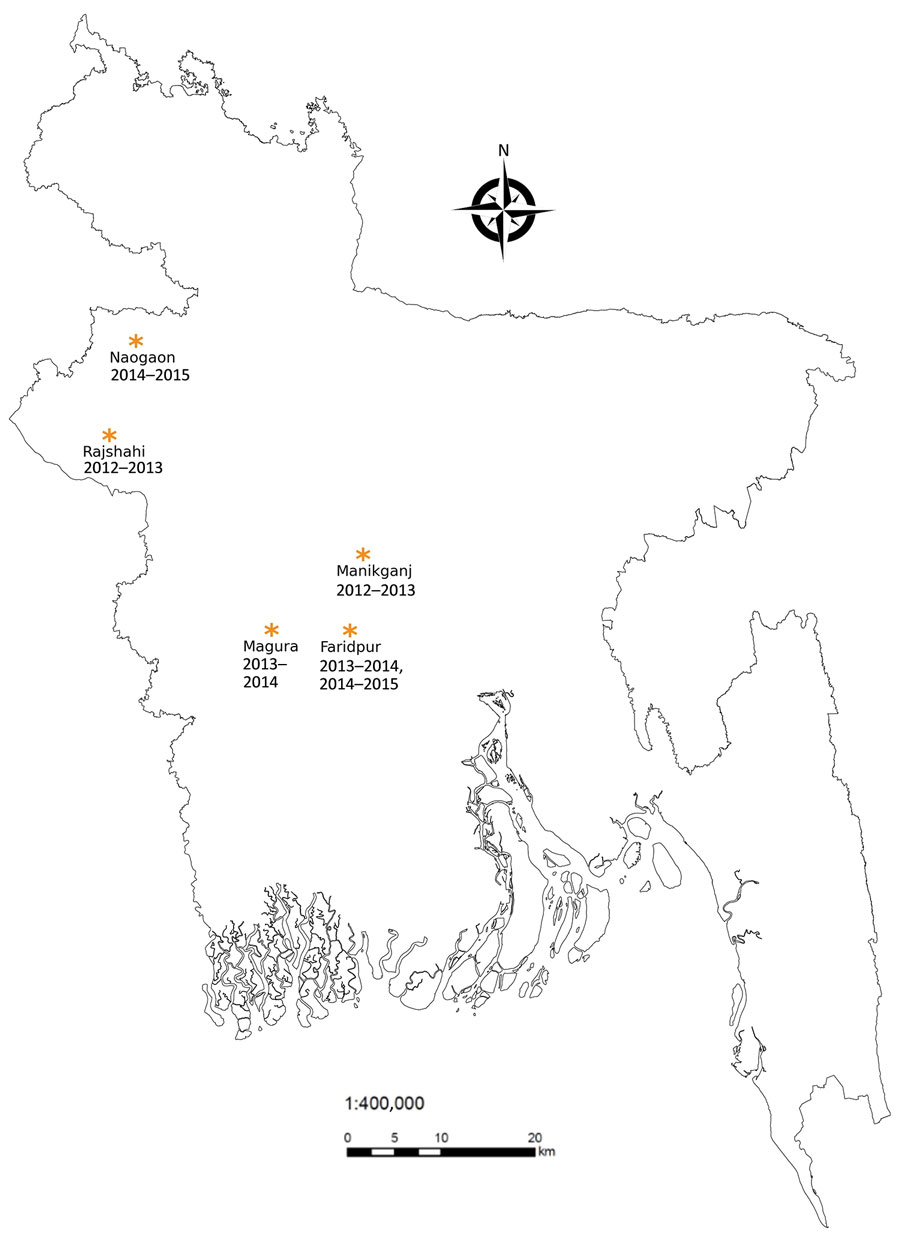Volume 29, Number 2—February 2023
Dispatch
Nipah Virus Exposure in Domestic and Peridomestic Animals Living in Human Outbreak Sites, Bangladesh, 2013–2015
Figure

Figure. Sites where spillover human Nipah virus infection cases were detected and domestic and peridomestic animals were sampled, Bangladesh, 2013–2015. In Faridpur District, we sampled twice, once during 2013–2014 and once during 2014–2015.
Page created: December 13, 2022
Page updated: January 21, 2023
Page reviewed: January 21, 2023
The conclusions, findings, and opinions expressed by authors contributing to this journal do not necessarily reflect the official position of the U.S. Department of Health and Human Services, the Public Health Service, the Centers for Disease Control and Prevention, or the authors' affiliated institutions. Use of trade names is for identification only and does not imply endorsement by any of the groups named above.